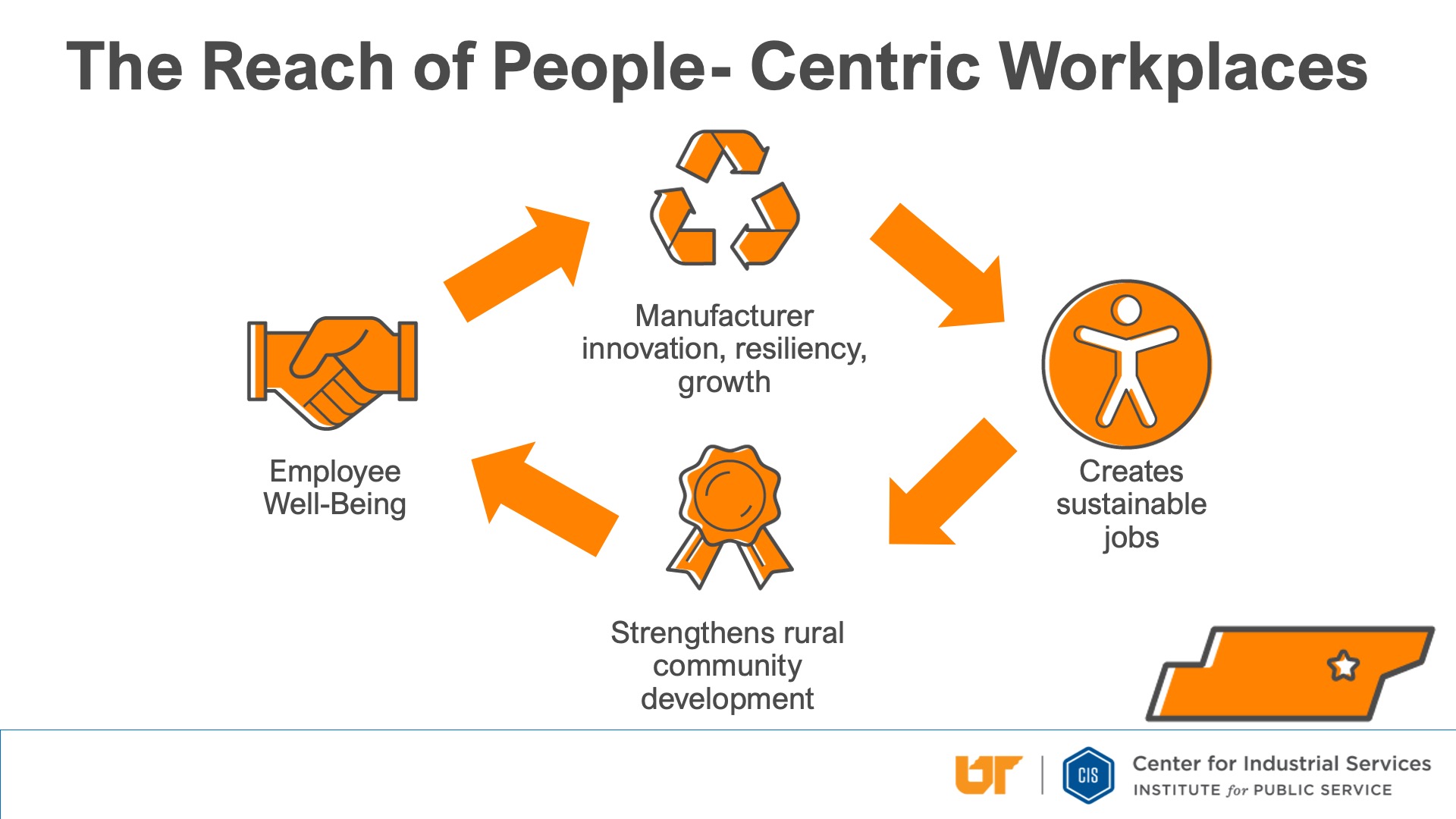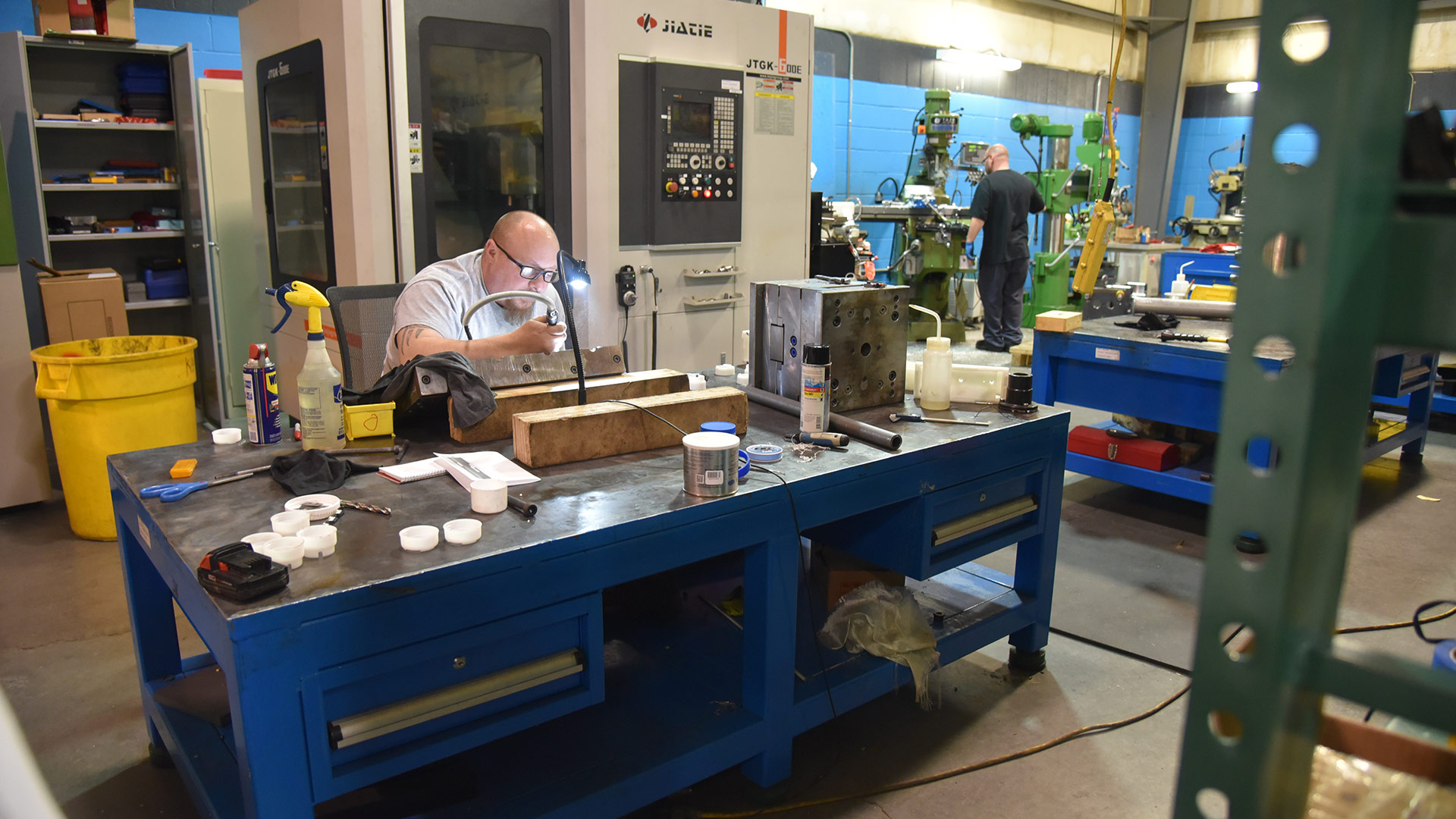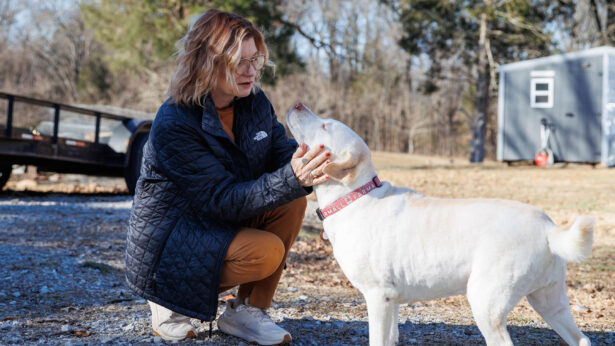
Families interact with many systems that help shape their home lives and their futures. Within these systems, information and influences flow upstream and down, affecting prosperity as well as happiness and well-being.
The family system is connected to the neighborhood system. Then there are social systems, religious systems and others. Among these varied systems are the workplaces where many Tennesseans can spend up to half their waking hours. In rural communities, workplace cultures that value people can often add critical support elements that strengthen the entire community.
The University of Tennessee Center for Industrial Services (CIS) and the UT Knoxville Department of Industrial and Systems Engineering (ISE) have long recognized the power of great workplaces. For several decades, they have been helping organizational teams develop skills such as problem-solving, conflict resolution, organizational excellence and leadership. These lessons follow people into their other systems.
Those same skills are often utilized at home as parents teach their children. Leaders use skills learned at work to improve the lives of their neighbors when they serve in public leadership capacities. When tragedy strikes, as happened after Hurricane Helene recently in East Tennessee, thousands of volunteers stepped up to help. No doubt, skills learned in the workplace helped to rescue and then to rebuild.
Influential workplaces do not naturally occur, though. There must be a certain intentionality applied. To establish and sustain a people-centered workplace, the team must know how their people development system (PDS) functions. The CIS Optimized People Development System is a leadership framework that uses systems thinking, lean thinking and learning organization concepts to help the stakeholders of the system gain a holistic understanding of their system, continuously improve it and create a learning environment that attracts and engages people.
When all the stakeholders of the PDS know their role within the system, when they know how they contribute to that system’s success and they learn the importance of creating an environment that nurtures learning and development for everyone on their team, the internal workforce development efforts of the organization are more easily aligned with the vision and mission of the organization. People are valued at a much higher level.

Servant leadership also is a crucial component. The Sawhney Model, developed within UT Knoxville’s ISE, emphasizes a simple concept: align manufacturing productivity and enhance workforce quality of life by shifting from reactive work to proactive work, simultaneously improving customer service and reducing employee stress. Compassionate leadership also finds its way out into the other systems of life.
Numerous studies show how workplace culture can cause stress. An Occupational Safety and Health Administration study found that 80 percent of U.S. workers have reported experiencing workplace stress, and more than 50 percent believe that their stress related to work also impacts their life at home.
But a great workplace can impact people in positive ways as well. One definition of success suggests that it means being excited to go to work and being excited to go home. When people are supported at work, when investments are made in their growth and development, and when they can see a pathway for themselves and their families, that feeling and that excitement follows them home.
Employers of this sort enjoy additional benefits as well. People who are engaged and feel valued tend to bring more ideas, help solve problems or identify improvement opportunities. A people-centric workplace builds a sense of belonging and a deeper level of commitment to success. Mutual commitment happens when both parties (employer and employee) recognize and accept their responsibility for the well-being of the other.
The benefit to rural communities is far-reaching. Stable people-centered businesses contribute to stronger local economies, impact health and safety outcomes, and improve key quality-of-life measures in meaningful ways. Life is an amazing amalgamation of systems. As an important part of these systems, Tennessee’s workplaces can play a critical role in the enhancement of rural communities. CIS and ISE are committed to helping companies focus on the things that are in their control—the ways they find, train, retain and care for people. These are long-term investments in the communities to which these organizations are so intricately connected. Both organizations know that it is a worthy investment in Tennessee families and the many systems that influence their future and ours.



